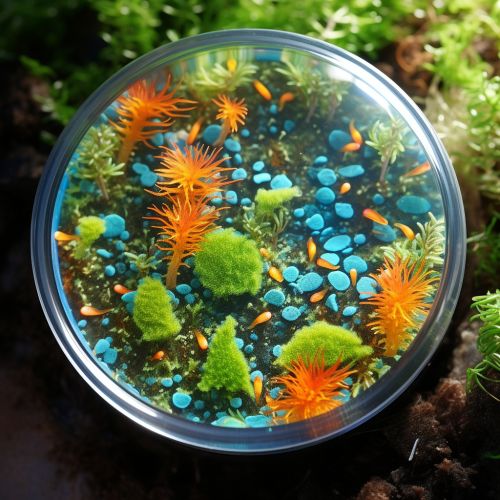Mechanisms of Microbial Biohydrogen Production
Introduction
Microbial biohydrogen production refers to the process by which certain types of microorganisms generate hydrogen gas (H2) as a metabolic byproduct. This process is of significant interest in the field of bioenergy due to the potential of hydrogen as a clean, renewable energy source.
Mechanisms of Microbial Biohydrogen Production
Microorganisms produce hydrogen through several distinct metabolic pathways, each of which is characterized by unique enzymatic reactions and energy yields. The three primary mechanisms of microbial biohydrogen production are fermentation, photosynthesis, and electron transport.
Fermentation
Fermentation is an anaerobic process in which microorganisms break down organic matter to produce hydrogen. This process is primarily carried out by a group of bacteria known as clostridia. These bacteria metabolize glucose through a series of enzymatic reactions, ultimately producing hydrogen, carbon dioxide, and other byproducts.
Photosynthesis
Certain photosynthetic bacteria, known as purple bacteria, are capable of producing hydrogen through a process known as photofermentation. In this process, light energy is used to generate ATP, which is then used to power the production of hydrogen from organic substrates.
Electron Transport
The electron transport chain is another mechanism through which microorganisms can produce hydrogen. This process is carried out by a group of bacteria known as hydrogen bacteria. These bacteria use the energy derived from the oxidation of organic compounds to drive the production of hydrogen.
Factors Influencing Biohydrogen Production
Several factors can influence the efficiency and yield of microbial biohydrogen production. These include the type of microorganism, the substrate used, the environmental conditions, and the presence of inhibitors.
Microorganism Type
The type of microorganism used can greatly influence the efficiency and yield of biohydrogen production. Different microorganisms have different metabolic pathways and thus differ in their ability to produce hydrogen.
Substrate
The type of substrate used can also influence the efficiency and yield of biohydrogen production. Organic substrates such as glucose are commonly used, but other substrates such as cellulose or lignocellulosic biomass can also be used.
Environmental Conditions
Environmental conditions such as temperature, pH, and oxygen concentration can also influence the efficiency and yield of biohydrogen production. Optimal conditions vary depending on the type of microorganism and the metabolic pathway used.
Inhibitors
Certain compounds can inhibit the production of biohydrogen. These include oxygen, which can inhibit the activity of hydrogen-producing enzymes, and certain metabolic byproducts, which can inhibit the growth of hydrogen-producing microorganisms.
Potential Applications of Microbial Biohydrogen
Microbial biohydrogen has the potential to be used as a renewable energy source. It can be used in fuel cells to generate electricity, or it can be used as a feedstock for the production of other fuels such as methanol or synthetic natural gas.


